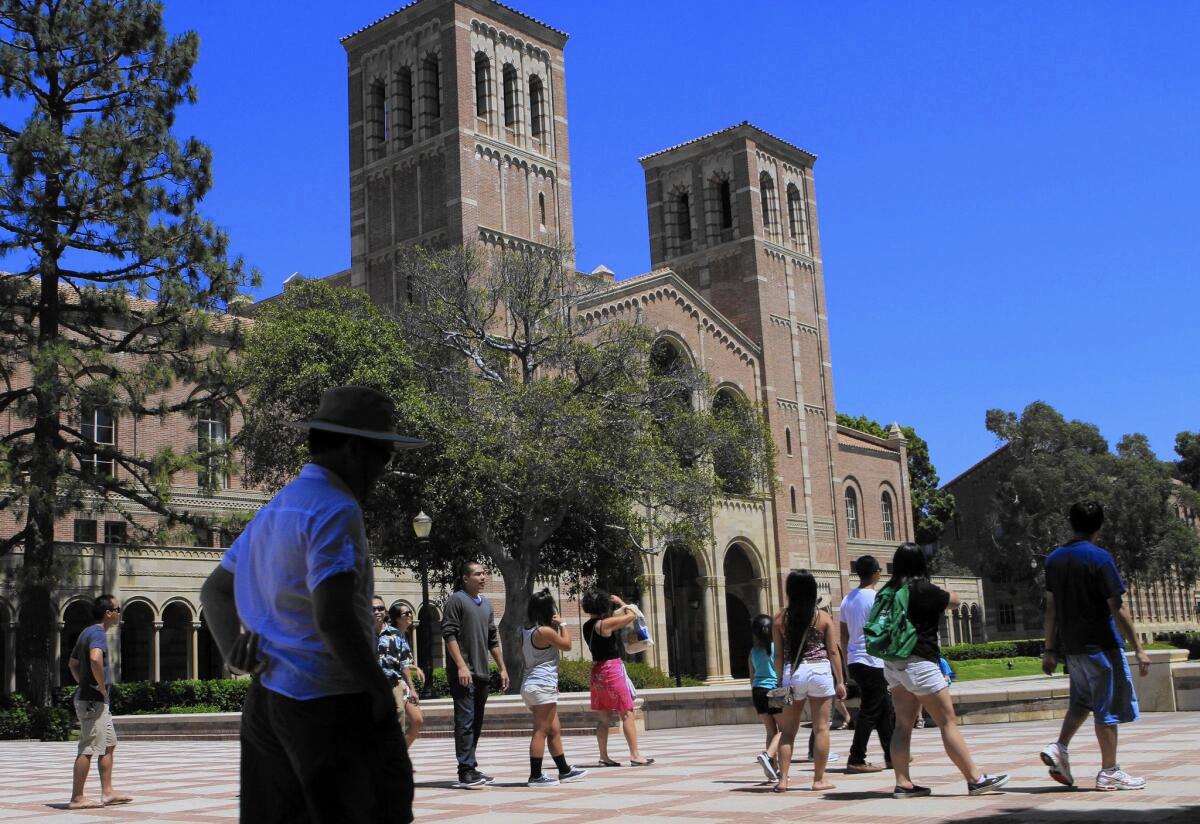Column: There’s a new Proposition 13. It would send billions to California schools that need it

SACRAMENTO — Proposition 13 is the only measure on the March 3 state ballot — and its number is causing many voters to do double takes.
Maybe we should retire certain proposition numbers like professional sports teams retire their superstars’ jersey numbers. It would eliminate confusion.
The difference, however, is that the honored athletes are iconic heroes. The celebrated propositions usually are loved by some and hated by others.
The original Proposition 13 is a prime example. In 1978, it substantially cut property taxes and became a national symbol of an anti-tax revolt. But it also stripped K-12 schools and local governments of significant property tax revenue and forced much of their care and feeding onto state government.
The latest Proposition 13 is an eye-glazing $15-billion state bond issue for education facilities spanning prekindergarten through the university systems. It has nothing to do with the original Proposition 13 — at least directly.
The measure warrants a “yes” vote on Super Tuesday, but don’t kid yourself: Unlike the original 13, the latest version would ultimately result in higher property taxes in many communities to pay for the local share of costs for school rehabilitation or new construction. It’s inevitable.
The confusion with the original 13 is aggravated by the fact that a teachers union-promoted initiative is headed for the November state ballot that would directly increase property taxes on commercial and industrial properties. It would be the first major amendment of the tax-cutting Proposition 13.
Some voters have called the office of Assemblyman Patrick O’Donnell (D-Long Beach), a coauthor of the new 13, accusing the state of lying about the proposition because they’ve heard it repeals the original.
Actually, the new 13 would provide $9 billion in bond money for K-12 schools and $2 billion each for community colleges, state universities and the University of California.
Of the K-12 money, $5.2 billion would be for modernization, $2.8 billion for new construction, $500 million for charter schools and $500 million for career tech (what we used to call “shop”).
The modernization would include improving earthquake and fire safety and removing lead from drinking water. Some of the money could be spent for preschool facilities. Universities would need to develop a plan for students’ affordable housing.
The way it currently works for K-12 schools is that the state pays for 60% of renovation and 50% of new construction. Schools pay for the rest, mostly with local property taxes and some developer fees. School districts apply for state bond money. And it’s first come, first served.
All that would significantly change under the ballot measure — largely because of former Gov. Jerry Brown’s lobbying. He hated the current system, arguing it favored wealthier school districts that could quickly apply for the state money.
When he was governor in 2016, Brown opposed a $9-billion bond issue for K-12 schools and community colleges because, he claimed, it was “a blunderbuss effort that promotes sprawl and squanders money that would be far better spent in low-income communities.” The measure passed anyway.
Under the new proposal, the state would pay for up to 65% of renovation costs and 55% of new construction. The highest amounts would go to districts with the least ability to raise their own funds and with large numbers of students who are from low-income families or are English learners.
First come, first served would be scrubbed and replaced with a system that graded applicants based on a priority list. The highest priority would be projects needed to improve students’ health and safety. Another priority — predictable from a government controlled by Democrats— would be construction projects using unionized labor.
Also, developer fees would be banned for multifamily residential complexes — such as apartments — located within half a mile of a major transit stop. For multifamily developments that aren’t near transit, fees would be reduced by 20%. These fees currently can amount to half of some projects’ construction costs.
Another significant change that is potentially costly to taxpayers: The cap on the amount of local bonds that districts could issue would be nearly doubled.
There are good reasons to vote “yes.”
Sure, K-12 enrollment is declining overall, but not everywhere. Anyway, most of the bond money is targeted for modernization.
“When kids walk into a school that’s clean and well kept, it sets the tone for the school day,” says O’Donnell, who taught high school social studies for 23 years.
Sen. Steve Glazer (D-Orinda), the other coauthor and a former CSU board member, says the state universities and UC each need $8 billion in capital outlay improvements. They’d get $2 billion apiece from Proposition 13.
“If the state doesn’t provide the money, the only alternative is to raise tuition,” Glazer says.
And there are rational reasons for voting “no.”
Interest on the bonds would cost $11 billion, bringing the total tab to $26 billion. Paying off the bonds would increase state spending by $740 million annually for 35 years. The state already is spending $6 billion a year to retire about $80 billion in various bonds.
“This is the largest school bond ever proposed,” says Jon Coupal, president of the Howard Jarvis Taxpayers Assn., the leading opponent. “The most critical rehabilitation needs can easily be handled with existing revenues when the state is running a surplus.
“But in all honesty, we anticipate it will pass.”
The opposition isn’t spending any money. And the backers — teacher unions, developers and construction unions — have raised $8.5 million for advertising.
This is a good Proposition 13. These are public facilities. And the only way to hold them together or expand for growth is with public money.
More to Read
Sign up for Essential California
The most important California stories and recommendations in your inbox every morning.
You may occasionally receive promotional content from the Los Angeles Times.











